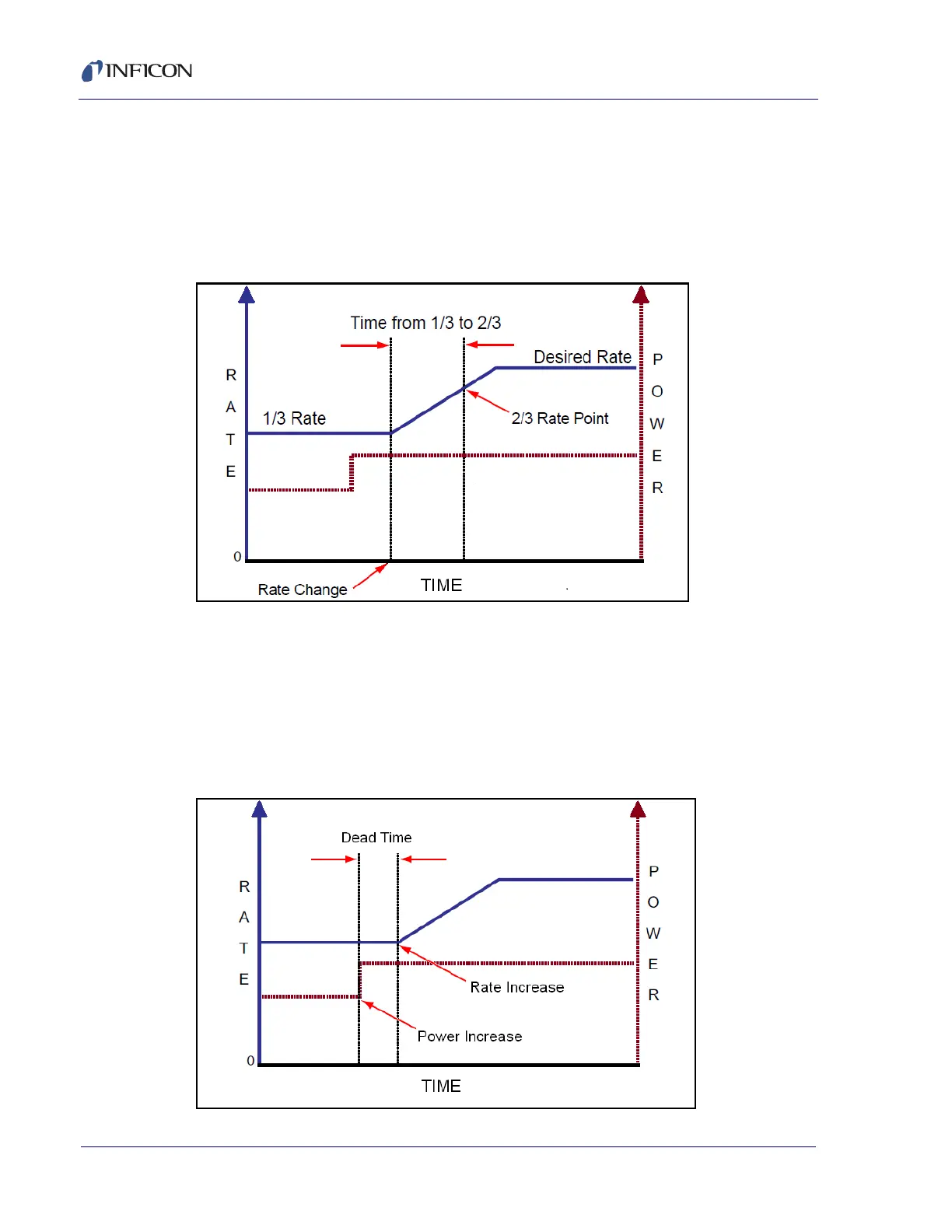7 - 6
PN 074-550-P1C
SQC-310 Operating Manual
The integral time constant (I-Term) parameter is defined as the time difference
between the actual start of a change in rate and the time at which approximately
66% of the rate step is achieved. It can be estimated as twice the time for the rate
to go from 1/3 to 2/3 of the desired rate (see Figure 7-2.) A small value for this term
causes more error correction. A large value ignores any past errors unless the error
lasts for a long time.
Figure 7-2 Integral Time Constant
The derivative time constant (D-Term) parameter is utilized to compensate for slow
responding sources such as boats and induction heated sources. This value is
defined as the time difference between a change in % power and the start of an
actual change in rate (see Figure 7-3.) The derivative time constant is used to
monitor the rate of change of an error. A value of zero for this term ignores the rate
of change of the error. A large value is used for a slow source which will take longer
to develop a rate increase and longer to stop a rate increase.
Figure 7-3 Derivative Time Constant (Dead Time)
